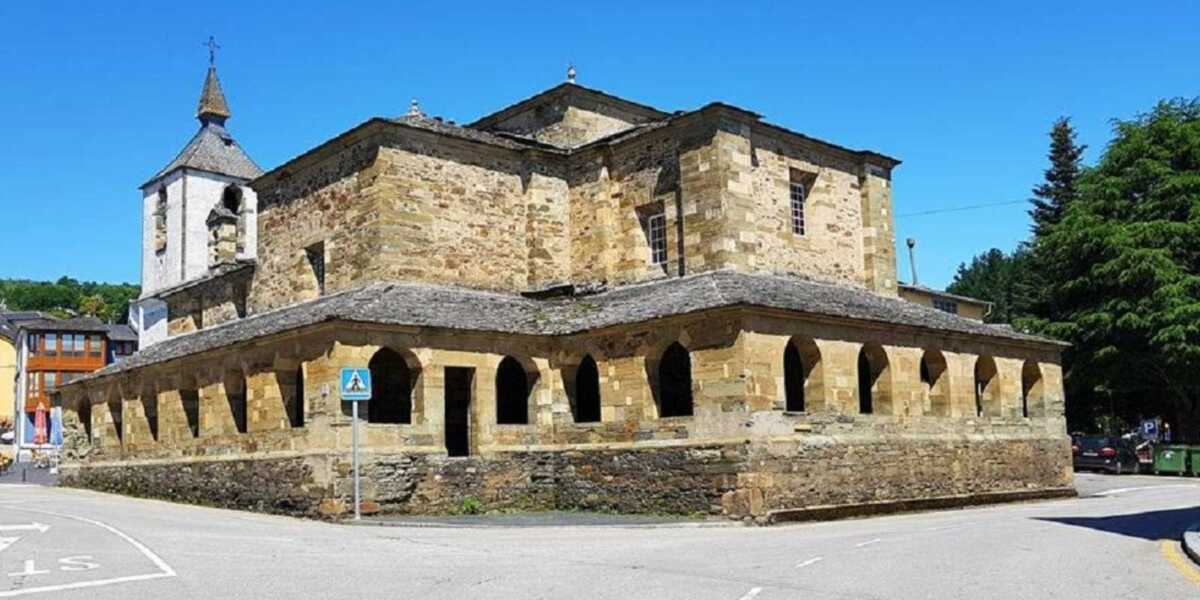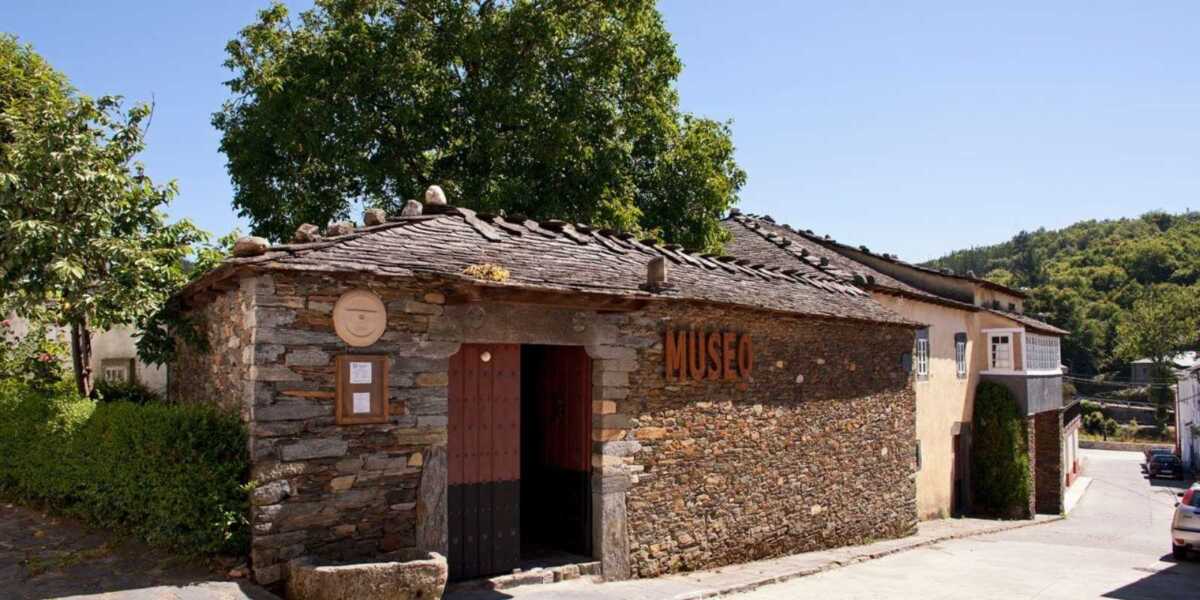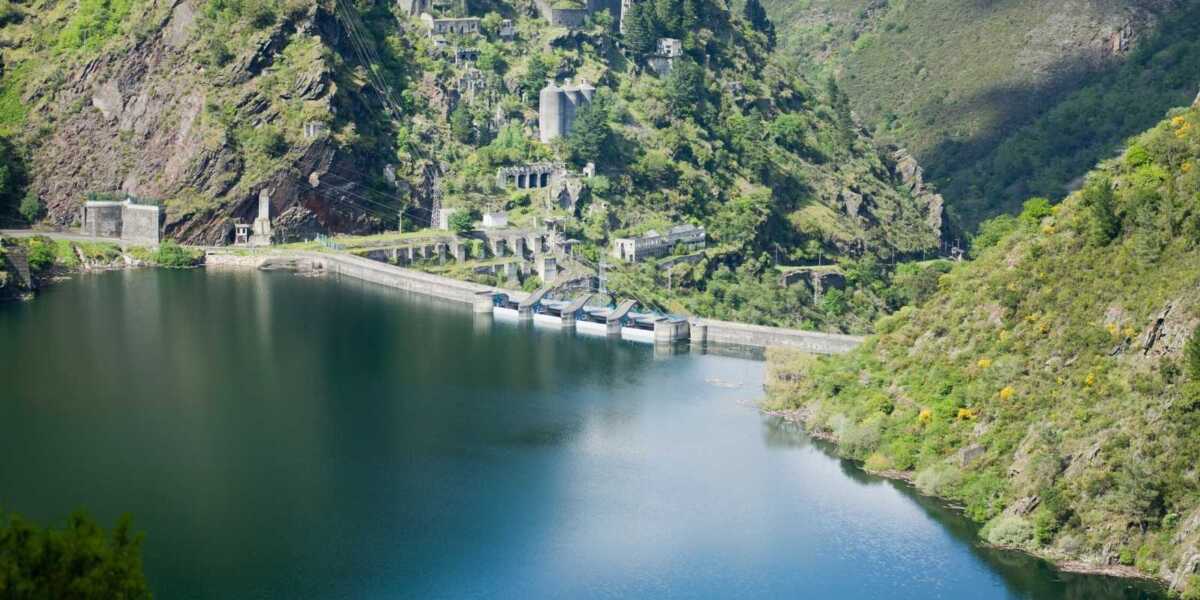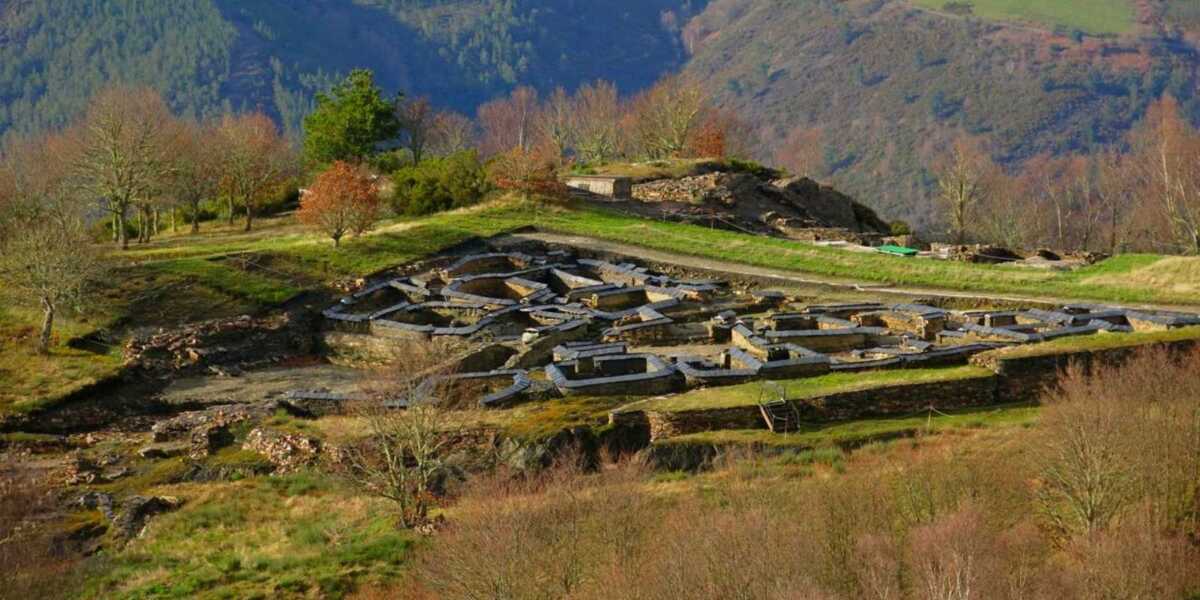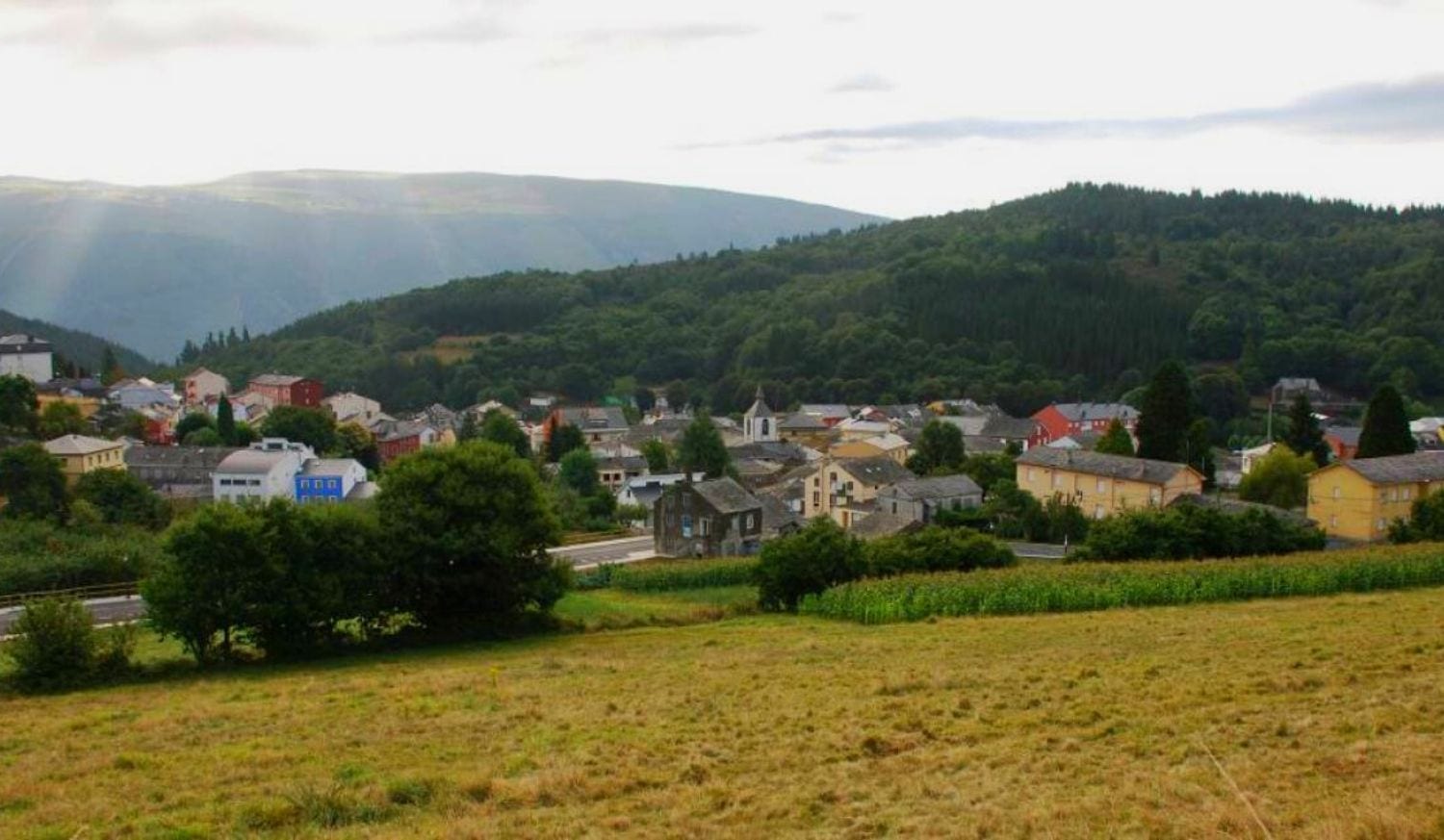
Information about Grandas de Salime
Grandas de Salime is the last municipality of the Primitive Way in Asturian lands. It is located on the border with Galicia, and due to its proximity, many of its inhabitants speak Galician.
From its more recent history we remember the construction of the Salime Reservoir. Works began at the end of 1945 and left the village of Salime under its waters. A total of 685 hectares were flooded; 1,995 farms with more than 3,000 plots of land, 25,360 timber trees, 13,800 fruit trees, 14,051 vines, 8 bridges, 5 small churches, 5 cemeteries and several chapels were flooded.
Today, when the reservoir is low, you can still see the remains of the old village ravaged by the waters.
What to see and do in Grandas de Salime
Collegiate Church of El Salvador
The primitive church dates back to the 12th century, of which the old Romanesque doorway is preserved inside the temple. The façade has triple cylindrical and spiral columns, it surrounds the baptismal font, the holy water font and two gargoyles are also preserved. On the south wall there are two Romanesque tombs under ogival arches, and on the outside there is an outstanding chapterhouse that surrounds the temple.
The main altarpiece, crowned by the Saviour, is from the 17th century. Some of the old images of the temple of Salime, which disappeared under the waters of the reservoir , are preserved. Also noteworthy are the chiselled iron plates placed on the inner door, similar to the iron fittings of the cathedral of Lugo.
Ethnographic Museum “Pepe el Ferreiro”.
The Ethnographic Museum of Grandas de Salime is a public museum of regional character, whose mission is to gather, guard, conserve, increase, investigate, communicate and spread the material and immaterial ethnographic heritage of the communities of Western Asturias.
A very interesting visit that will show us the way of life of the families of the Asturian rural environment in past decades, in huge facilities of about 3,150 m², and through more than 11,000 objects. In its interior are represented common places in the villages: a tavern, a grocer’s shop, a barber’s shop, a shoe shop or a forge, among many others…
Grandas de Salime Reservoir
Magnificent engineering work inaugurated in 1954. The dam has a height of 132 m and the tail of the reservoir reaches 36 km. There are several viewpoints along the right side of the road, with beautiful views over the reservoir. It is suitable for sailing and the practice of all kinds of water sports. It has a boat service that connects the pier of Pénjamo with Villarpedre.
Chao Samartín Hillfort and Museum
The Chao Samartín, whose ownership is currently held by the Town Council of Grandas de Salimee is one of the These are key sites to understand how the “castreño” phenomenon originated in the northwest of the peninsula, the evolution of the people who lived within its walls and the relationships they were able to establish with other peoples.
The origin of Chao Samartín as a human settlement dates back to the Bronze Age when, around 800 B.C., a first fortified enclosure was established on its upper esplanade. During the Iron Age its defences were renovated on several occasions and in Roman times it became a prosperous administrative capital, until an earthquake destroyed the town in the 2nd century AD.

